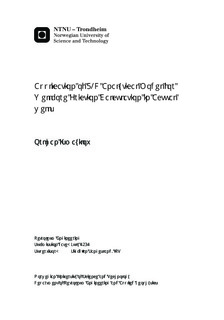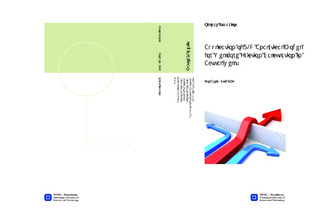| dc.contributor.advisor | Sangesland, Sigbjørn | nb_NO |
| dc.contributor.author | Ismayilov, Orkhan | nb_NO |
| dc.date.accessioned | 2014-12-19T12:16:31Z | |
| dc.date.available | 2014-12-19T12:16:31Z | |
| dc.date.created | 2012-11-10 | nb_NO |
| dc.date.issued | 2012 | nb_NO |
| dc.identifier | 566904 | nb_NO |
| dc.identifier | ntnudaim:7815 | nb_NO |
| dc.identifier.uri | http://hdl.handle.net/11250/239843 | |
| dc.description.abstract | With the increasing number of drilled ultra-extended reach wells and complex geometry wells, the drilling limitation caused by excessive torque and drag forces must be further investigated. The wellbore friction being a main limiting factor in extended reach well needs to be studied with the new developed models.This master thesis presents an application of the new 3-dimentional analytical model developed by Bernt S. Aadnøy in the synthetic test and four real wells. Quite diverse wellbore trajectory and depth has been chosen for a better evaluation and comparison of the model with the measured data. In order to investigate the potential and limitation of the model, torque and drag analysis during the different operations such as tripping in, tripping out, rotating off bottom, combined up/down were investigated. An application of the analytical model for wellbore friction analysis in the actual wells is very time consuming and requires a lot data/input manipulation. As a part of the thesis assignment, it was required to create simplified means for application and testing the analytical model. With visual basic application in Excel a simple torque and drag simulator was created purely based on the analytical model simple solution. Along with the analytical model the master thesis includes Wellplan software for torque and drag analysis in all the included test and actual wells. Along with this, the project has a brief literature study of 3D analytical model and torque and drag concept in general. The analytical model gives a reasonable torque and drag results. Based on comparison between the model and actual measurement, it has been observed that the analytical model simple solution in some cases may not precisely describe wellbore friction analysis. The discrepancy between Wellplan and the analytical model prediction occurs during the tripping in operations. Being a strong function of tension/compression in the drill string the analytical model for more accurate torque and drag prediction requires an application of the complete solution. The main challenge for this model is the complexity of its full application. There is an uncertainty regarding the model application in conjunction with drillstring effective tension. For the actual well application it is time consuming and requires drillstring effective tension analyzing which make the model disable for the real time analysis.The analytical model must be further investigated by application in the real well with good quality of measured data. | nb_NO |
| dc.language | eng | nb_NO |
| dc.publisher | Institutt for petroleumsteknologi og anvendt geofysikk | nb_NO |
| dc.subject | ntnudaim:7815 | no_NO |
| dc.subject | MSG1 Petroleum Engineering | no_NO |
| dc.subject | Drilling Engineering | no_NO |
| dc.title | Application of 3-D Analytical Model for Wellbore Friction Calculation in Actual wells | nb_NO |
| dc.type | Master thesis | nb_NO |
| dc.source.pagenumber | 106 | nb_NO |
| dc.contributor.department | Norges teknisk-naturvitenskapelige universitet, Fakultet for ingeniørvitenskap og teknologi, Institutt for petroleumsteknologi og anvendt geofysikk | nb_NO |

